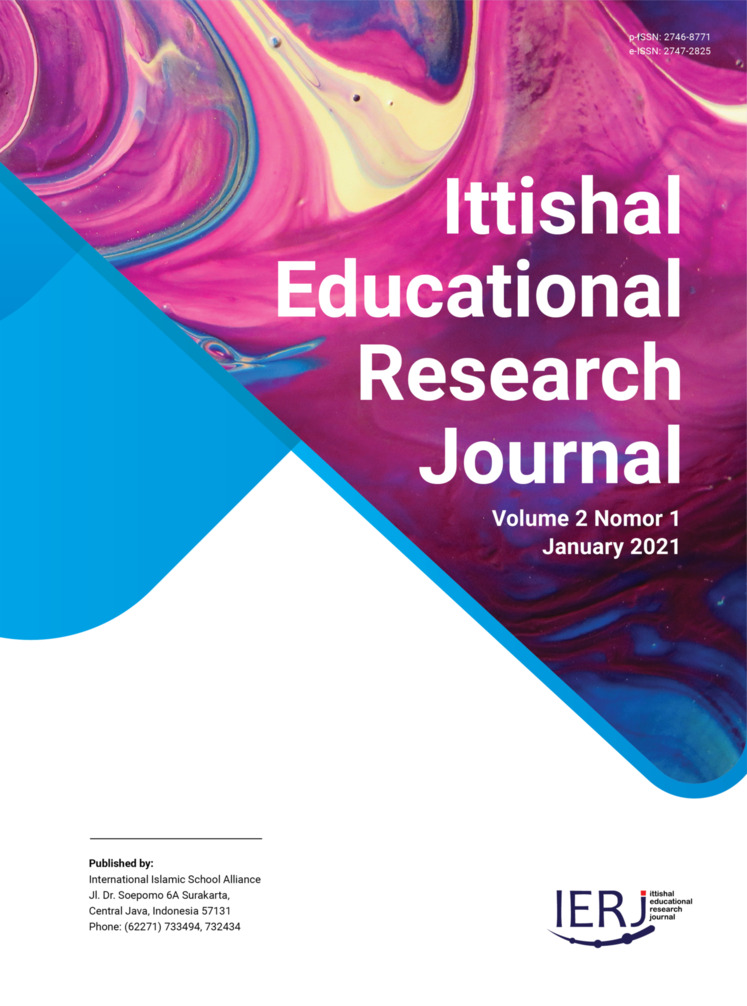Secularized Secondary School Schematic
Multi-Faith Teaching Etiquette Forecast
Abstract
Reacting to the harmonious upon religious pluralism in Indonesia, current educational policies are now supposed to involve a heterogeneous education concept. If based on the common fact, those who keen into pure islamic school, they usually are listed-in Madrasah Secondary School or Madrasah Aliyah. Prior to the pure-islamic school, students whose essence as a christian and/ or catholic, they constantly are enrolled to the Christian or Catholic Secondary School (see SMAK). Aside of them, neither pupils nor parents whose consider religion and ethnic (secular secondary school), their entrance are mostly addressed into the Secondary School itself (the school that hasn’t specify the religious matter). Opposing an existed fact above, this article is trying to exposing the concept of Secularized Secondary School. Such school’s model is prospectable to enhance the multitude of educational path by the Unity in Diversity or Bhinneka Tunggal Ika. A secular senior high school is able to be applied (soon) via multi-religion in Indonesia; 207 million (87%) Moslem; 16.5 million (7,0%) Christian; 6.9 million (2,9%) Catholic; 1.7 million (0,7%) Buddhism; 4 million (1,7%) Hinduism; and 117 thousands (0,05%) Confucianism. The aim of secularized here is equal by the universalized secondary school; which the students are organized by one-united vision above diversities. Such educational policy’s innovation is must be attempted over reconstructing and uniting thirteen-thousands-and-eight-hundred common secondary school around Indonesia.
References
Adnan, A. S. (2016). The perspective of multi-religious society on muslimization Policy in Malaysia: Asian Journal of Political Science , 24 (2), 196-213.
Amstrong, D. P. (October 2015). Effective school partnerships and collaboration for school improvement: A review of the evidence. The UK Departement for Education.
Bowen, M. &. (2017). A multi-religious response to the migrant crisis in Europe: A preliminary examination of potential benefits of multi-religious cooperation on the integration of imigrants. Journal of Ethnic and Migration Studies , 45 (1), 21-41.
Chapman. Academy Federations, chains, and teaching schools in England: Reflection on leadership, policy, and practice. School Choice , 7 (3), 334-352.
Everett, H. S. (2012, March). Faith Schools and Tolerance: a comparative study of the influence of faith schools on students' attitude of tolerance. A thesis , 366. London: Institute of Education; University of London.
Galace, L. N.-C. (2010). Peace education: A pathway to a culture of peace. Quezon, Philippines: Center for Peace Education, Mirriam College.
Hoon, C. (2017). Putting religion into multiculturalism: conceptualizing multiculturalism religious in Indonesia. Asian Studies Review , 41 (3), 476-493.
King, D. L. (2018). The impact of multilingualis on global education and language learning. Cambridge Assesment English.
Miedema, S. (2000). The need for multi-religious schools. Religious Education , 95 (3), 284-298.
National Centre of Excellence for Islamic Studies in Australia. (2008). Understanding the multifaith classroom in a secular society. Australian Government: Departement of Education, Employment, and Workplace Relations.
Russell, M. (2016, May). Religious pluralism in Indonesia: Harmonious traditions face challanges. European parliamentary research service/ EPRC.
Scott, S. &. (2012). Leadership and faith schools: Issues and challanges. Nottingham: National College for School Leadership.
The Indonesian Ministry of Education and Culture. (December, 2012). Kurikulum 2013. KEMENDIKBUD.
The Inter Faith Network for the UK. (2001). Interfaith issues and religious education curriculum. University of Brimingham, Westhill Religious Education Center. London: The National Association of SACREs.














